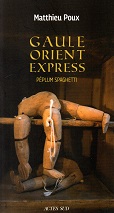---------------------
The older etymology (Stokes, Holder, Rhys, Watson CPNS 68-69) connected the name with a supposed Welsh gwerthyr 'fortress', but Williams and others have doubted if such a word existed. It is found in local names but without early attestation, and seems not to be recorded in literature until 1753 (Thomas Richards's dictionary), after which it was used by antiquarians (GPC, s.v., without reference to the present name for an etymology). F. G. Diack in RC, XXXVIII (1920-21), 121-22, had already indicated a division Verturiones 'very powerful', with intensive prefix *uer- (see VERLUCIO) and Turiones, a tribal name equivalent to Turoni-Turones of Gaul (> Tours). O'Rahilly EIHM 463-64 accepts this. The base is then *treno- (earlier *trexno-) 'strong', now represented by Welsh trenn 'impetuous, strenuorus' (briefly mentioned under our Traxula), with a form of development shown by many Gaulish personal names such as Turos Turus (from which came Turones) and Turio- Turia (from which *Turiones); Holder II. 2006, etc. The British name was taken into Gaelic as Fortrenn, the name of a region, a genitive of a notional nominative *Fortriu (dative Fortrinn), on which see Wainwright PP 21 ; this name has British *uor-, a later stage of *uer-. It may be significant for the history of the North British tribes that the place Dumyat, which prﺣ۸serves the name of the Maeatae, is in Fortrenn.
-------------
Le Tayside produit aussi un bon whisky. C'est donc normal qu'ils soient 'trﺣ۷s forts'.
JCE



